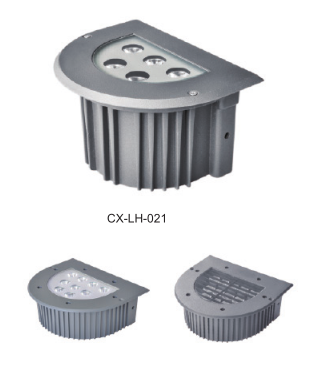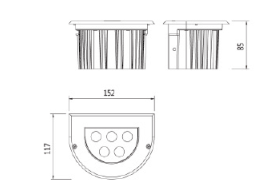1. Radiated radiation means that the body emits heat in the form of infrared radiation. When the skin temperature is higher than the ambient temperature, the body's heat is lost in radiation. Radiation heat dissipation is related to skin temperature, ambient temperature, and effective radiation area of ​​the body. Under normal circumstances, radiation heat dissipation accounts for 40% of the total heat dissipation. Of course, if the ambient temperature is higher than the skin temperature, the body will absorb radiant heat. The steelworkers work in front of the furnace. This is also the case when farmers work in the fields under the sunshine during the hot summer months.
2. Conduction and convection are the way the body dissipates heat by transferring molecular kinetic energy. When the human body is in direct contact with objects that are warmer than the skin (such as clothes, beds, chairs, etc.), the heat itself is transmitted to these objects. Clinically, using ice caps, cold packs, and other methods to cool high fever patients is to use this principle. Convection is the flow of air, which uses air as the medium for heat dissipation.
Heat exchange between the radiator and the environment
When the heat is transmitted to the top of the radiator, it is necessary to dissipate the heat transferred to the surrounding environment as quickly as possible. In the case of the air-cooled radiator, heat exchange with the surrounding air is required. At this time, heat is transferred between two different media. The formula followed is Q=αX A XΔT, where ΔT is the temperature difference between the two media, ie, the temperature difference between the radiator and the surrounding air, and α is fluid. The thermal conductivity is a fixed value after the material of the heat sink and the air component are determined; the most important one is the contact area between the heat sink and the air. Under the precondition of other conditions being constant, such as the radiator, the volume will generally have Due to limitations, the space inside the chassis is limited, and it is difficult to increase the installation. It is an effective means to increase the heat dissipation efficiency by changing the shape of the heat sink, increasing the contact area with the air, and increasing the heat exchange area. To achieve this, the surface area is generally increased by the use of fin-type designs supplemented by surface roughening or threading.
When the heat is transferred to the air, the temperature of the air in contact with the fins will rise rapidly. At this time, the hot air should be carried away as much as possible with the surrounding cold air through convection and other heat exchange methods. For air-cooled radiators, The most important measure is to increase the speed of air flow and use fans to achieve forced convection. This is mainly related to the design of the fan and the wind speed. The performance of the radiator fan (such as flow rate, wind pressure) mainly depends on the fan blade diameter, axial length, fan speed, and blade shape. Most fans use CFM (inch, cubic feet per minute) and a CFM of about 0.028 mm3/minute.
Aluminum radiator
Pure aluminum radiator is the most common early radiator, its manufacturing process is simple, and its cost is low. So far, pure aluminum radiator still occupies a considerable part of the market. In order to increase the heat dissipation area of ​​its fins, the most common processing method for pure aluminum heat sinks is aluminum extrusion technology. The main indicator for evaluation of a pure aluminum heat sink is the thickness of the heat sink base and Pin-Fin ratio. . Pin refers to the height of the fin of the heat sink, and Fin refers to the distance between two adjacent fins. The Pin-Fin ratio is calculated by dividing the Pin height (excluding the base thickness) by the Fin. The larger the Pin-Fin ratio, the greater the effective heat dissipation area of ​​the heat sink and the more advanced the aluminum extrusion technology.
Led Underground Lamp is a new type of buried decoration lamp with high brightness LED as the light source and LED constant current drive as the driving mode.Widely used in square, park, leisure places, such as outdoor lighting, outdoor as well as park, square, garden greening, lawn, flower beds, pedestrian street, waterfalls, fountains, water etc illumination, add luster for life.

Product size

Technical parameters
|
Main material |
High - pressure cast aluminum, 92% high - light steel screen printing glass |
The light colored temperature |
Red/Green/Yellow/Amber/Vermilion/Acid blue/3000K/4000K/5000K/6000K
|
|
Surface treatment |
UV Polyester powder coating |
Light distribution device |
Reflector lamp cup series:6° Optical lens series:8°/15°/25°/45°/10×30°/10×60°/20×40° |
|
The light body color |
Dark grey |
Working voltage |
DC24V |
|
Safeguard procedures |
Silica gel ring compacted waterproof |
way to install |
Embedded part |
|
Average lifetime |
350mA20000hours,500mA15000hours |
rated power |
/ |
|
Control mode |
/ |
Level of protection |
IP65 |
|
operating ambient temperature |
-25℃~50℃ |
Working environment humidity |
10%~90% |
Led Underground Lamp ,Led Underground Headlamp,Led Cap Lamp Underground Mining,Underground Led Cap Lamps
Jiangsu chengxu Electric Group Co., Ltd , http://www.chengxulighting.com